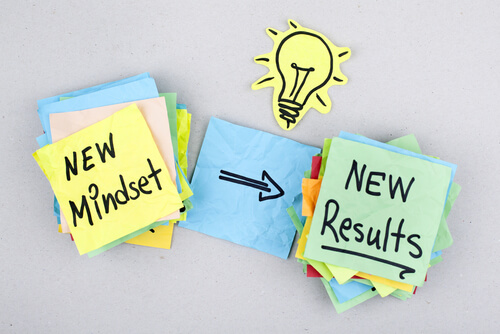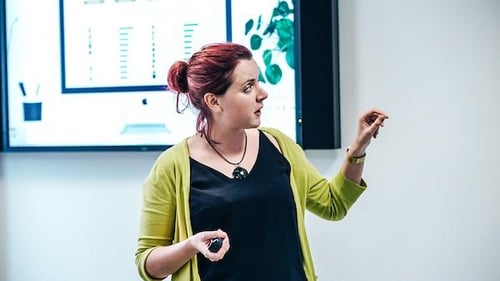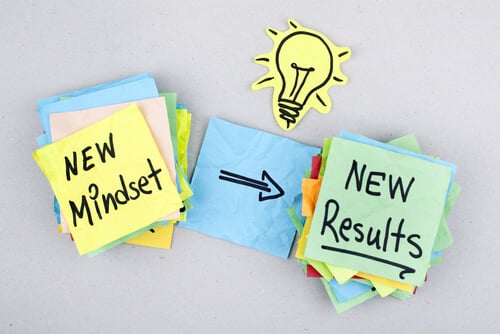
5 min read
The world of HR is ever changing. When I joined the world of work in 1996 HR was called Personnel, changing swiftly to Human Resources (HR) and then a more recent pivot to “People,” which I have to say is my favorite and preferred naming for both my team and the function as a whole.
While a simple name change might be enough to rock the world of HR, how we do things has also changed, and pretty dramatically.
In the old days, projects were done as large single items, launched in one big fanfare, with a rotating set of priorities as time evolves. This replicated how things were done in business and in technology, where software teams waited ages to release their “perfect” solution.
But things have changed and now the world of business and software development now talks agile — move fast and break things became the mantra when tech giants like Facebook, Google and Amazon took over the market. And now, HR has also got the agile bug. And I’m telling you, it’s here to stay.

How does agile HR work?
Agile is a way of working, that in simple terms means that when an aspect of a bigger program is ready, you release it. For software, that means when a feature or improvement is ready, you then release it.
For agile HR this means that when a policy is adjusted, you release, rather than waiting until you have finalized all of the revisions.
The benefits of agile HR are clear:
- Everything is as up to date as it can be.
- You can make amendments where needed.
- You allow your employees the freedom to do what they need to do, with fewer processes and rules.
- You can pilot more aspects and adjust to make feedback.
- Things are faster and everyone receives more info, feedback, support and direction faster.
So this sounds great in theory, but let’s talk about how you can start being more agile at work with small changes in your business.
.jpg?width=500&name=US-Communications-Desktop%20(1).jpg)
Making agile HR work in the real world
The key to making agile in HR work effectively is starting with open and honest communications. If you start there, then everyone is able to work better and more effectively, as they know what they are doing.
Waiting for big announcements to start things is the old way of working.
Having everyone work towards the same goal, the panacea being aligned targets, goals or OKRs. This way you can adjust to what you need, and create value across teams by working together and having mutual benefits in all areas.
So how do you create that? Firstly, you have a mission which is understood and anchors what you want to do. This means your employees know your purpose and values, and these enable them to be better at their jobs, be faster at what they wish to do and also empowered to be more independent, which create value and success.
| The essentials to the new world of HR |
| 1. Open and honest communications |
| 2. Mission-driven organization |
| 3. Technology to improve processes |
Technology in agile HR: The catalyst that drives change
By having technology as the core tool for improvement, allowing employees to own what they do is key. A few simple ways to start thinking agile HR:
- Have a self-service module on your HR system, instead of employees coming to your People Ops team.
- Introduce technology-based recognition, instead of paper-based nomination programs.
- Celebrate and share employee communications in a social media-like format so success is known instantly.
Download our eBook to discover agile HR/human resources tips and ways to practice open and honest communications »
Technology allows you to focus on continuous improvement, the principle of always improving and letting you try small things and measuring them to create successful adjustment — and when added together, introducing significant changes.

Your HR team is probably more agile than you think
Here’s the reality: Most HR teams are already doing agile in some areas. The principle of social and instant employee recognition programs is agile recognition, done then and there, not waiting for a quarterly achievement program.
Another trend taking shape that’s more agile is the introduction and importance of continuous feedback rather than the annual review, or employee pulse surveys versus a tedious, lengthy annual employee engagement survey.
Both of these are success stories in the HR world and key elements for the transition to an agile HR workforce.
An agile approach to collecting, understanding and acting on employee feedback can underpin the transition to agile HR.
But what does it look like in practice? First, look at what you are doing in all aspects of your HR processes, and ask yourself two questions:
- Is this process engaging and is it enabling employees as much as it could?
- What technology can I use to improve the process or outcome?
Technology enables agile HR to be central to improvements in employee onboarding (contact with your new soon-to-be employee is as needed, and without having to go to HR to get a paper contract drafted), recruitment (we review resumes as they come in, not with a closing date) and e-learning that enables users to decide what they study, without HR approval, as they already have given you the system. We’ve looked to solutions like Enboarder and LinkedIn Learning to adapt with our organization as we learn and grow.

Here’s why agile HR is here to stay
When working in a truly agile way, HR still delivers the same services it's always provided like recruitment, learning, employee engagement and people ops, but it does it in a way where it is responsive to the ongoing changes in the culture and work style of the business as a whole.
In simple terms, everyone wants to improve, and agile allows you to do that one adjustment at a time, when you can and when you want. Tell me, are your teams thinking agile, and if not, why not?

 Robert Hicks
Robert Hicks
